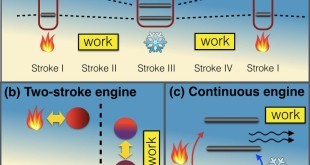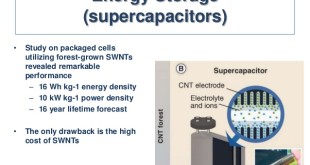The Digital India programme, launched in July 2015, is a flagship programme of the Government of India with a vision of transforming India into a digitally empowered society and knowledge economy In line with the Honourable PM Shri Narendra Modi’s vision of ensuring that technology is “accessible, affordable, and adds …
Read More »DARPA’s WARP developing wideband adaptive RF circuit technology to Protect Ultra-Wideband Military radios, radars and EW systems from Jamming
The military uses the electromagnetic spectrum — essential, yet invisible — to detect, deceive and disrupt the enemy while protecting friendly forces. As enemies become more capable and threats more complex, controlling the spectrum is increasingly critical. However, today’s electromagnetic (EM) spectrum is a scarce resource that is becoming increasingly …
Read More »DARPA Ditto developing artificial intelligence (AI) and machine learning based surrogate models to speed design of military systems
DoD is exploring opportunities to incorporate autonomy, AI, and human-machine teaming into its weapons and operations. Whether as data-mining tools for intelligence analysts, decision aids for planners, or enablers for autonomous vehicle operations, these systems have the potential to provide more accuracy, speed, and agility than traditional tools. Yet operational …
Read More »DARPA DIGIT employs gene editing to diagnose COVID-19 and other pandemics and also determine the strain, their origin
Major infectious diseases, like COVID-19, often go undetected until they spread. Spotting the problem in a community isn’t easy, in part because infectious disease detection, which is the foundation for surveillance and contact tracing, can take hours, if not days. Compounding the problem is that traditional detection assays are designed …
Read More »Nanotechnology enhanced weapons and Nanoweapons are growing Global Security Threat with potential to cause human extinction
Nanotechnologies involve designing and producing objects or structures at a very small scale, on the level of 100 nanometres (100 millionth of a millimetre) or less. It allows humans to play with the building blocks of the universe, exploiting the laws of quantum mechanics to construct materials with unimaginable precision – …
Read More »Quantum thermodynamics and Quantum Heat Engines can lead to development of microscopic heat engines, refrigerators and solar cells
One of the most important features of thermodynamics is that it has improved human quality of life amazingly during the last centuries. Since in 1606, the Spanish inventor Jerónimo de Ayanz y Beaumont patented the first steam engine a great effort has been done in developing new and better thermal …
Read More »Drone, UAV or UAS Antenna, Requirements and market growth
An unmanned aerial vehicle, or UAV, refer to a vehicle that is able to fly remotely, either with some sort of controller or autonomously. An unmanned aircraft system, or UAS, includes not only the UAV, itself but also the person on the ground controlling the flight, as well as the …
Read More »Nanotechnology enhanced Supercapacitors, including Graphene and carbon nanotubes (CNTs) provide superfast battery charging in electric vehicles to wearable electronics
The rapid increase in global energy consumption and the environmental impact of traditional energy resources pose serious challenges to human health, energy security, and the environment; and reveal a growing need to develop new types of clean and sustainable energy solutions such as electric vehicles with low exhaust emissions. However the …
Read More »Future Mobile core network infrastructure will be built as cloud native service for IoT and Enterprise applications
Cloud computing has burst recently into technology and business scene promising great technical and economic advantages, like offering On-demand provisioning of computer services, improved flexibility and scalability as well as reducing costs. Another attractive point of the cloud is its ability to enable a mobile workforce, which brings enhanced flexibility …
Read More »Countries advance Border management Strategy and technology to counter terrorists, and criminals, smuggling weapons, and illegal drugs, and counterfeit goods
In an increasingly globalised and interconnected world it has become simple for people and goods to cross borders and so for terrorists. America’s borders and ports are busy places, with tens of millions of cargo containers and hundreds of millions of lawful travelers entering the country each year, while tens …
Read More » International Defense Security & Technology Your trusted Source for News, Research and Analysis
International Defense Security & Technology Your trusted Source for News, Research and Analysis










